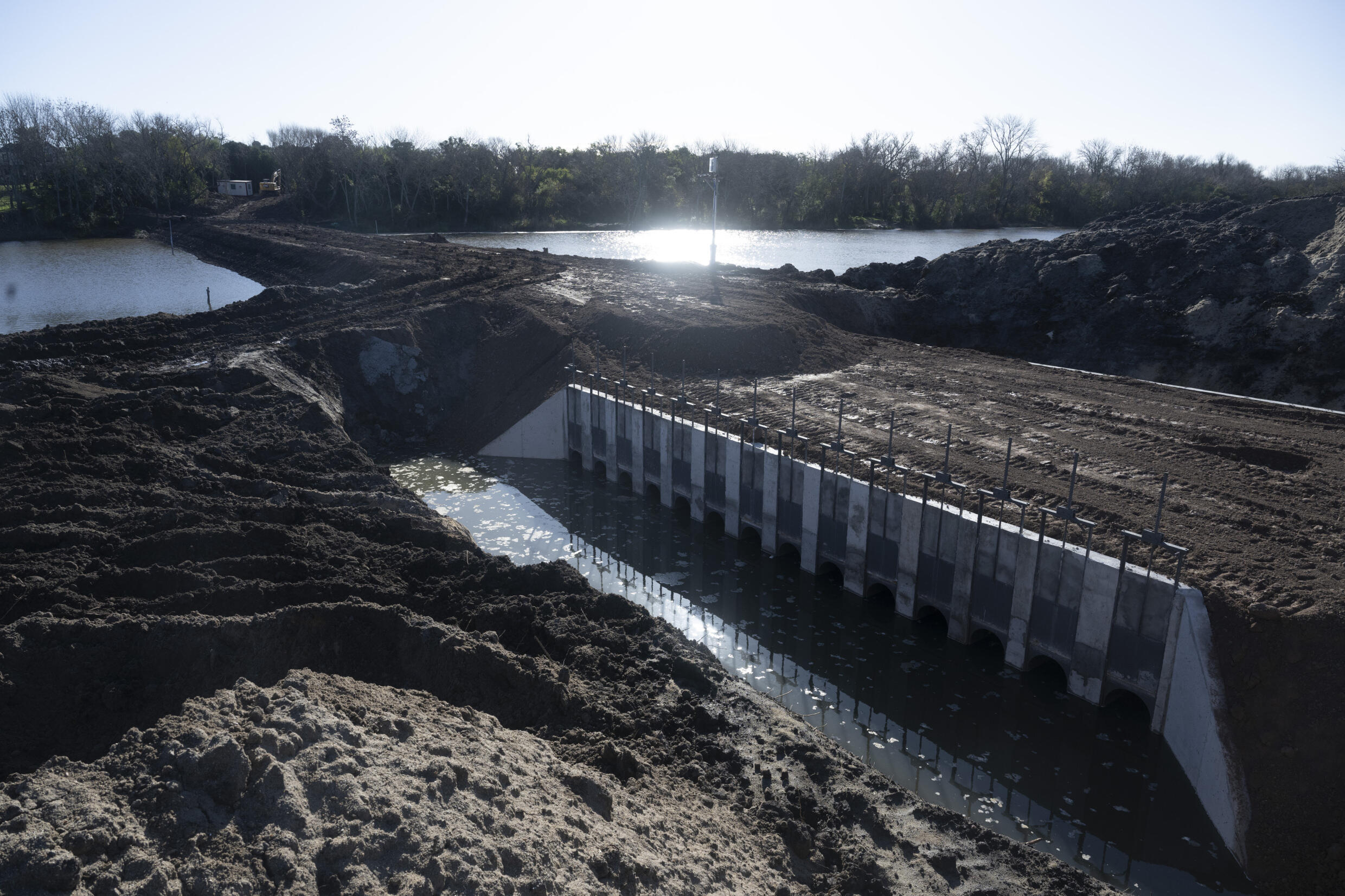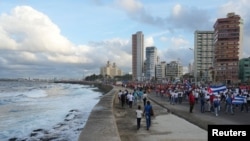Paso Valdez (Uruguay) – Pipes, ditches, excavators: Uruguay is working against time to channel fresh water to the most populated area of the country, where for more than two months the tap water has been salty due to a severe drought. What’s going on?
First modification:
5 min
In Paso Valdez, some 65 km northwest of Montevideo, the Government is advancing in the laying of 13.3 kilometers of pipes to transfer water from the San José river to the Santa Lucía, on which is the only plant that has supplied water since the 19th century. of water to the 1.8 million inhabitants of the Uruguayan capital and its surroundings.
The state company OSE is building a dam and a pumping station on the San José River to alleviate the water deficit that has affected the region for more than three years. President Luis Lacalle Pou estimated on June 19 that the works would be completed in 30 days.
The urgency is great since the main fresh water reserve for the Aguas Corrientes plant is almost exhausted. On July 11, in the Paso Severino reservoir that feeds it, only 2.09 million cubic meters remained, barely 3.1% of its total capacity, according to the latest official report.
Saltwater
Faced with growing scarcity, OSE decided to build the Belastiquí dam, an emergency dam to ensure the flow that reaches Aguas Corrientes from the lower part of the Santa Lucía River, coming from the Río de la Plata estuary, which contains salty water from the Atlantic.

Under the morning sun, Victoria Ichazo, assistant production manager at Aguas Corrientes, points out the three pumps that were added to the three that already sucked water from the lower Santa Lucía. Before it was not so salty. But the drought that affects the entire region has also reduced the fresh water supplied to the estuary by the Uruguay and Paraná rivers.
Very close to there, the building of the old steam power plant of Aguas Corrientes rises elegantly.

The plant, which celebrated its 150th anniversary in 2018, was in the hands of the English company The Montevideo Waterworks Cº Ltda from 1879 to 1950.
The last major infrastructure project to increase freshwater reserves for the capital area dates back to the 1980s, with the construction of the Paso Severino dam.
damaged water heaters
Montevideo and its surrounding areas consume some 500,000 m3 of OSE water per day.

On May 4, the Ministry of Public Health authorized a “temporary exception” from the maximum levels allowed in OSE water of up to 440mg/l of sodium and 720mg/l of chlorides, above the regulations that set a ceiling of 200mg/l and 250mg/l, respectively.
“The water supplied by OSE is safe, except for certain populations,” the Minister of Public Health, Karina Rando, tweeted on Tuesday, July 11, recalling that it is recommended not to drink more than one liter a day if you have high blood pressure, and to avoid it in cases of chronic kidney disease, heart failure, cirrhosis and pregnancy.

“When you brush your teeth it’s horrible, you feel the salty water, it’s disgusting!” says Isabel Moreira, as she prepares a mate with mineral water at her home in Montevideo.
This 73-year-old retiree complains about the impact of the salt water on the hot water tanks, and points to the one in her kitchen, which broke this week, as has happened to many Montevideans recently.
He also deplores the blow to his pocket: since the crisis began, he has bought about 40 liters of mineral water a week at a cost of 600 pesos (about $16), which, like his neighbors, he even uses to give to his pets.
Pizza made with mineral water
In downtown Montevideo, Nicolás Pérez is in charge of a business that has sharply increased its sales of bottled water, exempt from taxes since last month.
“Per person they have taken up to 8, 12 (cans between 6 and 10 liters). Then we have stores, restaurants and some hotels that have taken up to 20,” he says.
A sign in the Ejido Bar seeks to give customers peace of mind.
From coffee to pizza and fainá, “all the products are prepared with mineral water,” says the manager, Federico Peinado.
In Parque Batlle, the city’s main park, the first well drilled by OSE to extract groundwater produces some 30,000 liters per hour, which are distributed by tanker trucks to hospitals.
Since the beginning of July, the government has paid for two liters of bottled water per day to more than 500,000 vulnerable people residing in the metropolitan area.





![[Img #74676]](https://thelatestnews.world/wp-content/uploads/2024/12/Laser-artificial-neuron-150x150.jpg)









